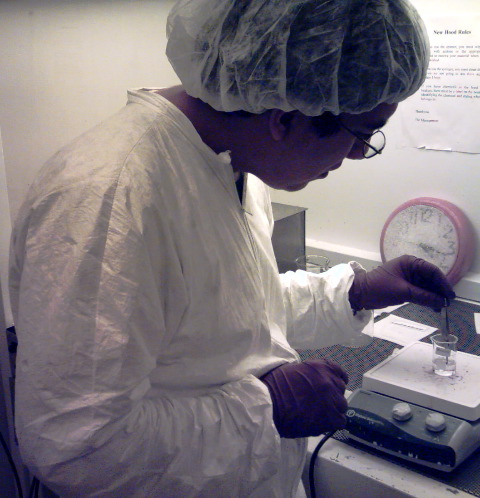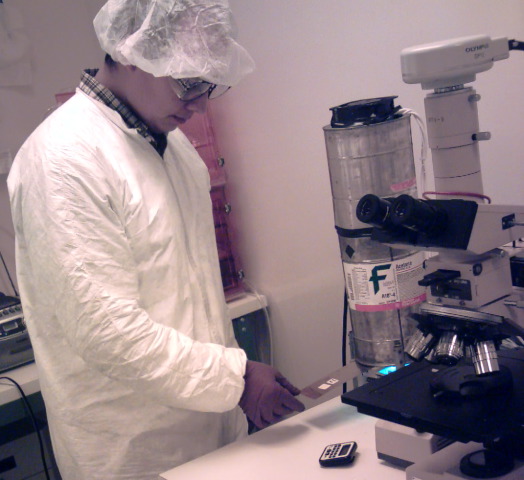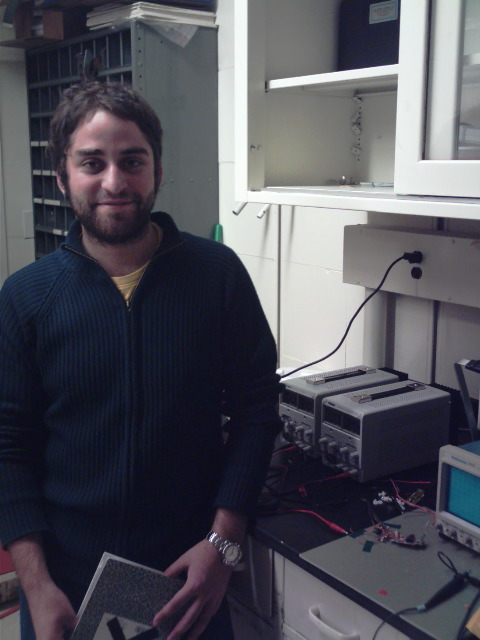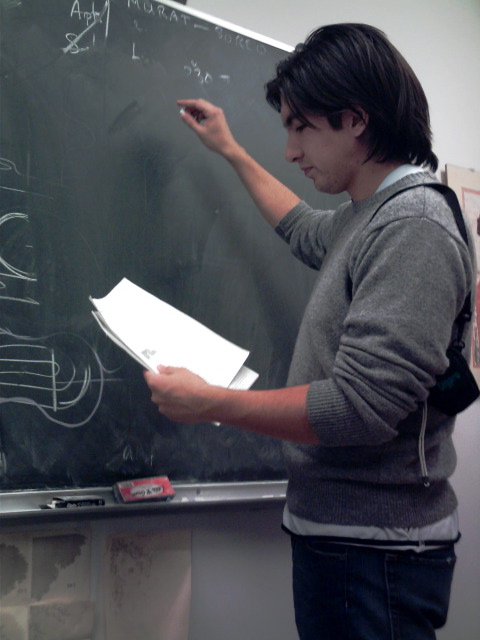|
German is studying sand jets in Prof. Nagel's lab. He shoots a stream of fine glass particles against a flat target and watches the patterns that form using a fast camera. The jets are surprisingly different from individual particles. Individual particles bounce nearly elastically from the surface. However, the stream of particles forms a pancake in the plane of the target. With larger, heavier particles the plan begins to turn into a cone pointing downstream. Ripples form both radial and tangential on the length scale of the thickness of the pancake. The morphology of shapes with target shape and particle size and view angle are very rich. The coherence of the pattern seems to be due to the mutual entrainment of the particles by air. German wants to assess the role of air by varying the available parameters.
nail target When the jet hits a flat target that is smaller than the jet, the jet deflects to form a cone of a well-defined angle. This angle can be determined by assuming a) the target absorbs momentum of the jet in proportion to its area, and b) the kinetic energy (and thus the speed) of the drop is unaffected by the collision. These two facts together imply a linear relationship between the target diameter and the deflection angle. when the target is small. The same facts explain the analogous behavior of a liquid at the highest velocities where surface energies are least important. Some discrepancies are still seen. These may be due to incomplete local equilibrium or air drag. 
|  |









